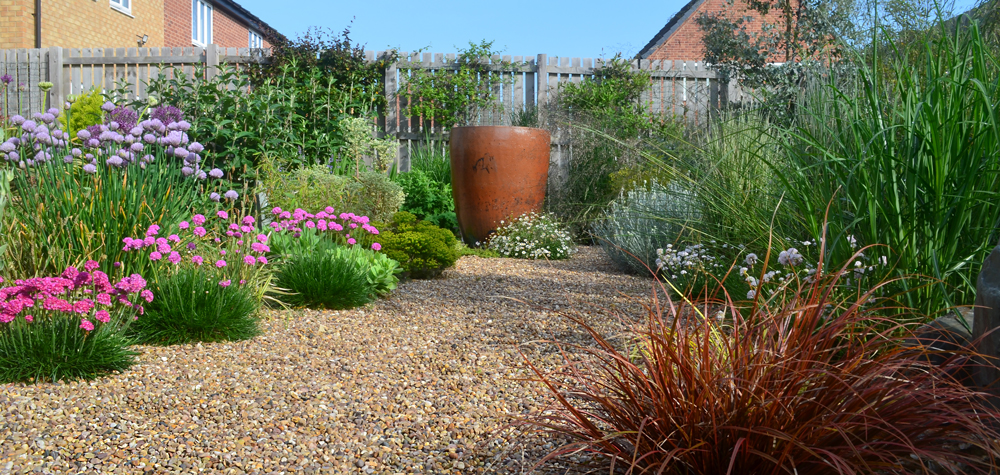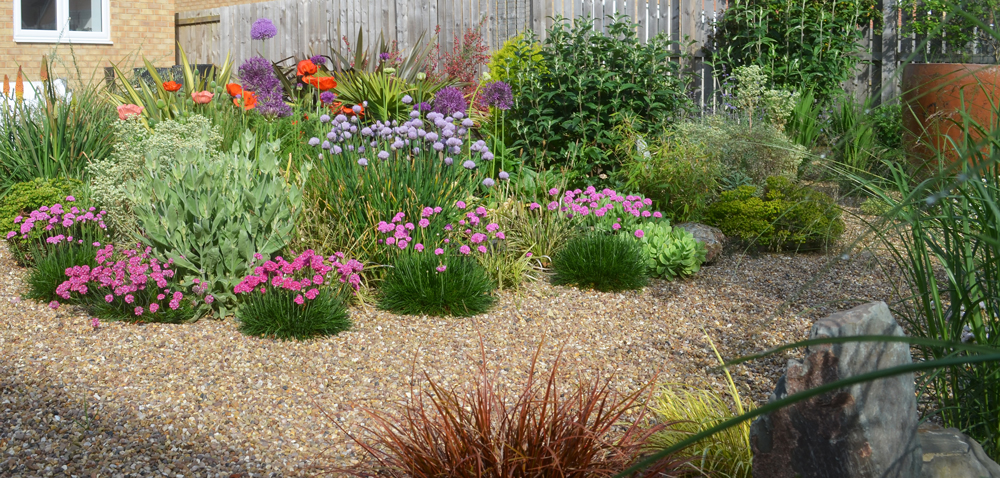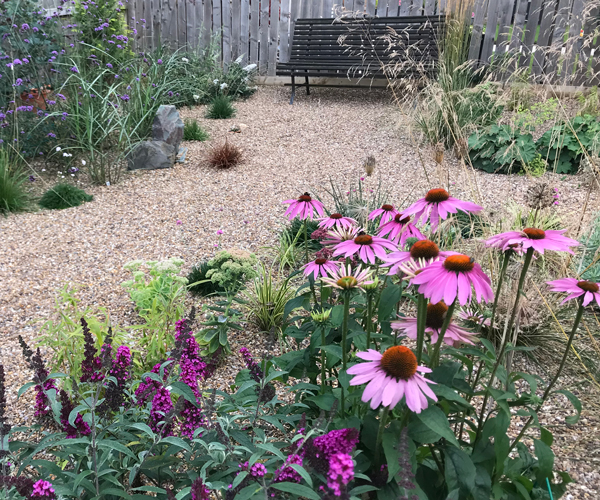A low maintenance Dry Garden to evoke fond memories
Garden Design Brief
When I visit potential clients for consultations, I am often asked to design gardens with low or even no maintenance as an objective. In truth, a zero-maintenance garden is impossible without drastic use of reinforced concrete, which as I garden designer, I couldn't be party to.
A low maintenance garden however is a different challenge and doesn't necessarily mean a garden devoid of plants flowers and more importantly, pollinators. With this project there was sadly a poignant reason for the need for low maintenance in that the lady making the request had lost her husband who loved his garden and was the main gardener of the partnership. So now it was down to my client to take on the role of ‘head gardener'.
During their many years of marriage they had lived in Italy in a small town close to the coast with a large garden, with planting that often had to deal with seasonal extreme heat and drought. During visits to many gardens in the UK, the client had been inspired by Beth Chatto's Garden in Colchester and wanted a dry garden that would employ plants reminiscent of their garden in Italy whilst not generating too much maintenance.
General observations
The garden in question is on a small estate of new houses close to a market town and as with many new housing estates the gardens are not large but tend to be exposed to turbulent winds caused by the buildup of many surrounding houses and sadly few trees. The garden itself was approximately 13.5 metres deep x 11.5 metres wide of which a patio had already been laid and occupied the first 3.5 metres adjacent to the house, with the remainder employing a lawn to cover up goodness knows what amount of builder's waste and rubble. This was then enclosed with a 2-metre rough boarded fence.
The garden had already been planted with Eucalyptus, Laurus nobilis (Bay), Phormiums and Rhododendron plants with one or two exotics and some of these plants would lead to much higher levels of maintenance moving forward, with limited return.

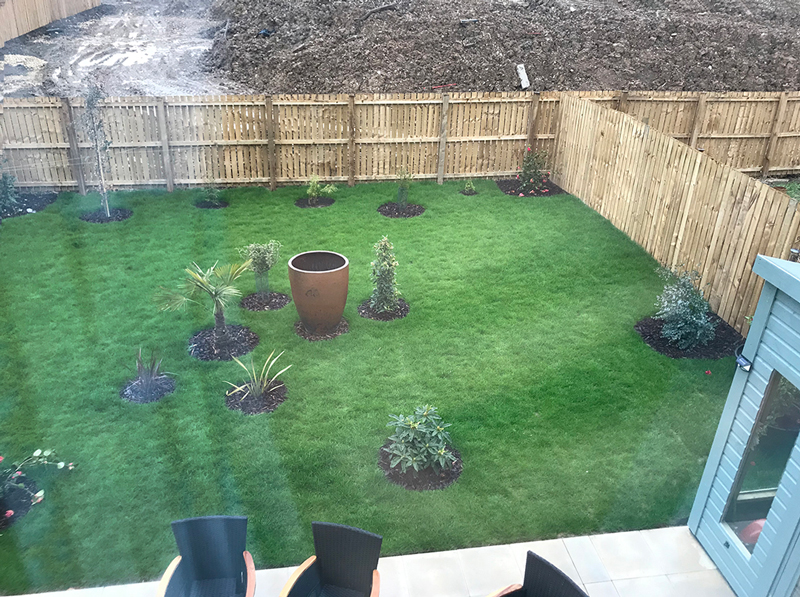
Dry Garden design Solution
So, what the space required was to replace the standard lawn with a dry garden full of drought tolerant plants, many of which might evoke memories for the client of past times in Italy, including Santolina, Lavendula, Buddleja, herbs and grasses. New build housing estates are often areas which have had bio-diversity completely destroyed, so the new garden design needed to be a beacon for the re-introduction of insect and bird life into a garden space whilst providing interest and solace to the client. For this I introduced a simple path defined only by plants softening its edges with aromatic foliage and flowers that slowly draws visitors around the space. There is also a seating area with a bench that enjoys the afternoon sunshine overlooking the garden back towards the house and a space dominated by an existing large glazed pot creating a focal point, its outline again softened with plants. Height would be achieved by the presence of two existing eucalyptus trees, which were to be joined by the addition of clump forming bamboo, for movement and sound and the cloaking of the fence in climbing plants, adding to the screening and privacy.
the project
First part of the project was to remove the lawn and lift any of the newly planted shrubs and trees that were to be retained. The area was then levelled and weather proof boarding installed around the perimeter of the fence to prevent migration of shingle into neighbouring gardens. The roughly shaped path areas were made more stable by introducing a compacted hardcore base. The area was then covered in a strong permeable membrane and covered with 100mm of pebbles. Stakes were driven into the ground roughly marking out the vague outline of the pathway, to act as an initial guide for planting, which would be subsequently removed.
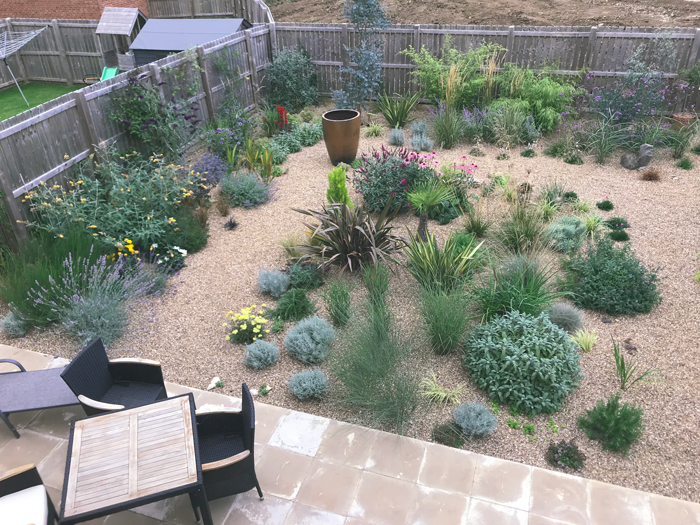
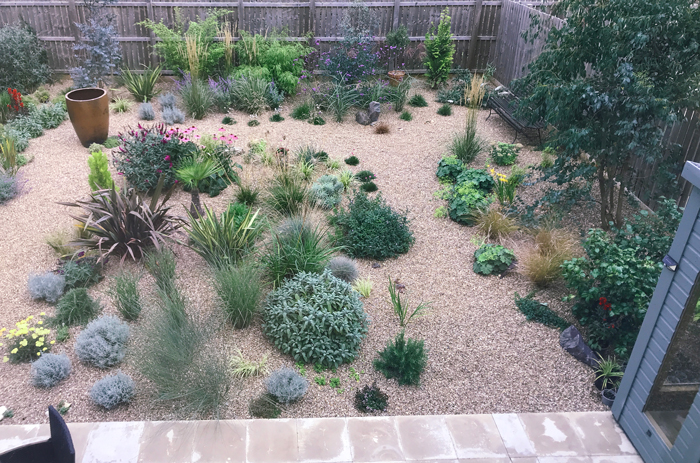
Planting
Planting for this project needed to ensure the species chosen would need to endure poor soil, strong prevailing winds, high levels of sunshine and drought. Each plant is installed through a hole cut into the membrane reducing the weeding to those which are able to set seed in the gravel but can be easily removed.
One plant that made a huge difference to this project was the Buddleja, which also brought back memories of the garden in Italy. As most gardeners know Buddleja is an excellent plant for pollinators but it never really achieves the status of a feature plant, however over the last few years Buddleja has seen quite a renaissance in gardens with many cultivars and even dwarf versions coming to the fore. In this garden alone 5 different varieties have been used subsequently leading to the presence of many different butterflies. Three of these Buddleja's are shown below.

A number of grasses have been planted to give movement including Stipa gigantea, Calamagrostis acutifolia and Miscanthus sinensis and Deschampsia cespitosa assisted by the tall wavy ‘pom poms' of Verbena bonariensis and the rustle of the fargesia rufa (a clump forming bamboo).


The garden is now also an assault of colour on the eyes throughout the year and not just in flowers but foliage colour too delivered by many of the above named plants and some extra additions, such as the reddish purple Alliums, blue Echinops, the pink Echinacea purpurea, the punchy reds of Lobelia cardinalis, the vibrant yellow and reds of Crocosmia and the silver, greys and blues of Helichrysums, Lavendula and Eucalyptus .
To deliver scent Lavendula, Perovskia atriplicifolia (now renamed Salvia yangii), Rosmarinus, Santolina chamaecyparissus, Nepeta, Helichrysum italicum and Salvia officinalis have all been introduced.

Texture is provided by the spiky Phormiums and Festuca, the softness of Stipa tenuissima and Salvia yangii, the waving strands of Cytisus, Lavendula partnering the grasses and intense complexity delivered in the form of the Fargesia rufa Bamboo.
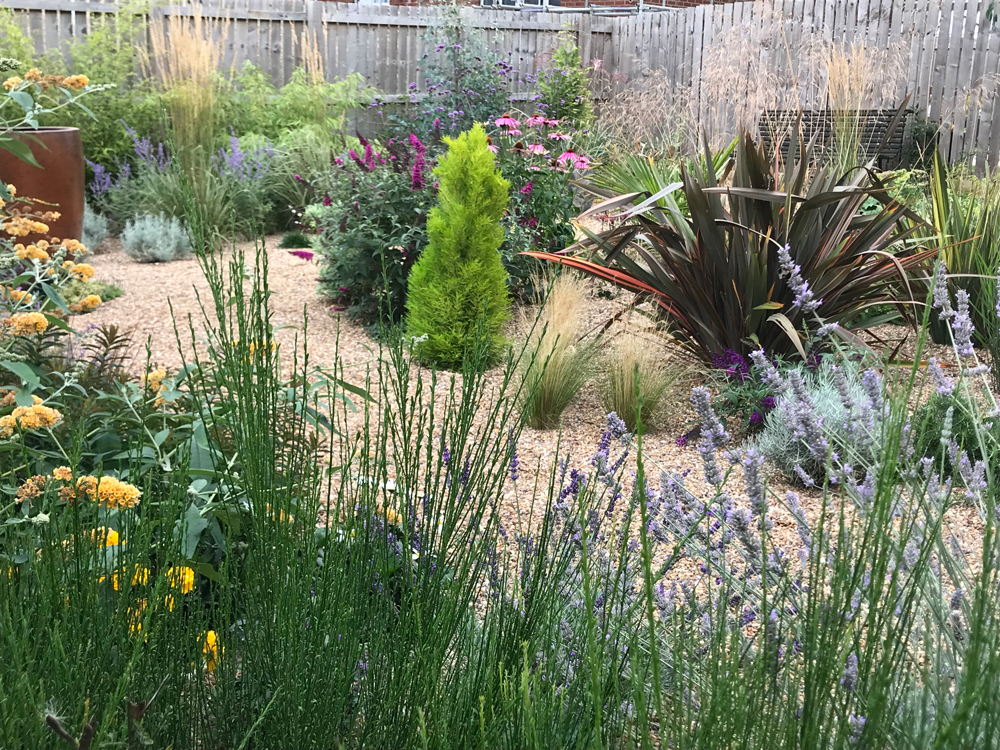 .
.
By the following year the planting was a joy to see. The garden not only achieves the sensory objectives of scent, colour, texture and movement it also has height and structure. Autumn colour comes from the Hylotelephiums and Mahonia.
The garden will continue to deliver through the seasons, and many of its plants in petrified form, will provide horticultural structure through the winter.
THE OUTCOME
With climate change now a feature of all our lives dry or Mediterranean gardens are growing in popularity, as not only can they be lower in maintenance; they can be a huge source of enjoyment, interest and sustainability. Many of the plants listed above are multi-functional such as Verbena bonariensis, which provides height, movement and colour in just one plant, whilst also acting as a draw to pollinators. This was a common feature across many of the plants. The overall result was amazing, even in its early development visitors are drawn around the garden by an interesting and everchanging form of plants. A really enjoyable project and one I'm very proud of.
Latest Update - The Garden 2 years on
